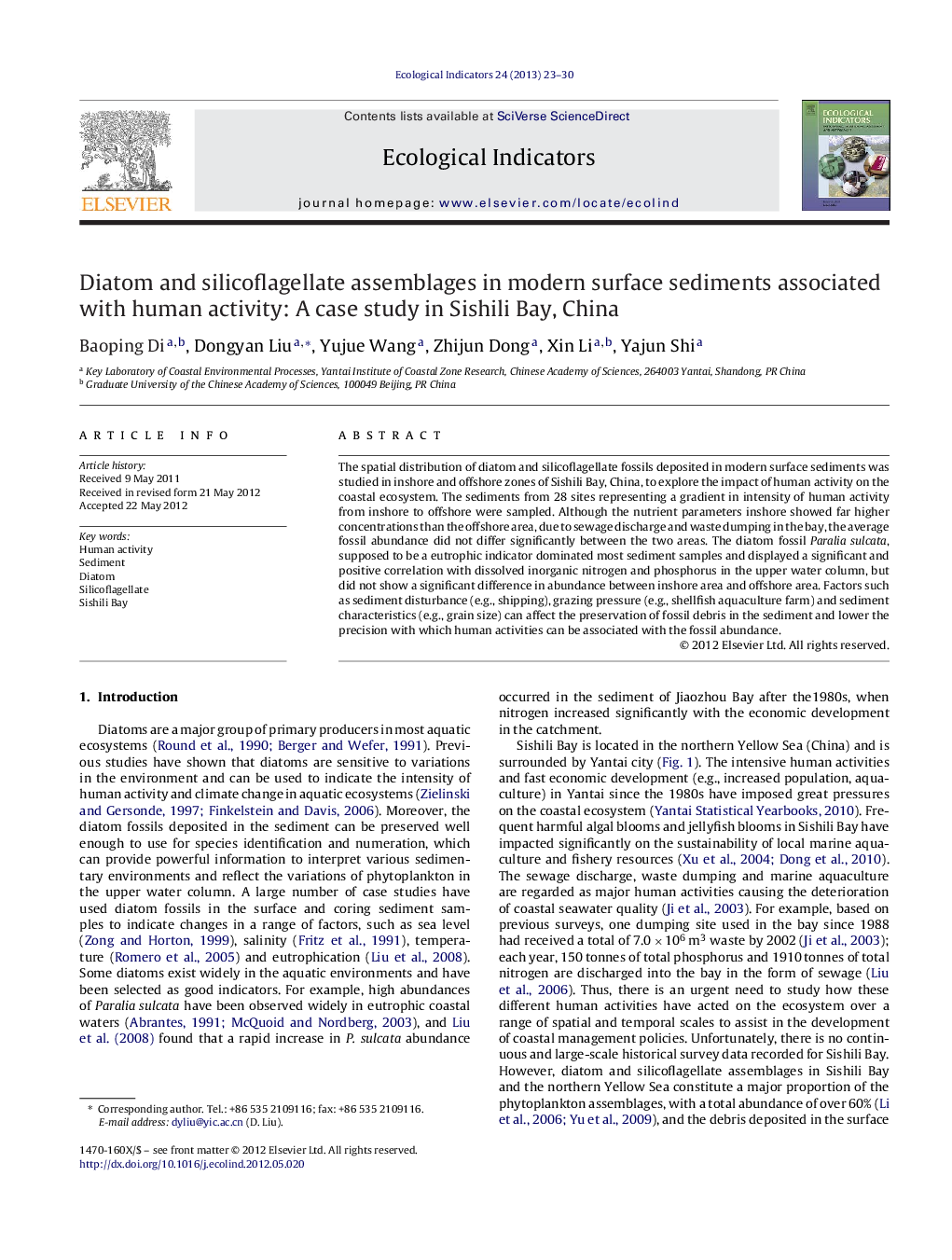| Article ID | Journal | Published Year | Pages | File Type |
|---|---|---|---|---|
| 4373616 | Ecological Indicators | 2013 | 8 Pages |
The spatial distribution of diatom and silicoflagellate fossils deposited in modern surface sediments was studied in inshore and offshore zones of Sishili Bay, China, to explore the impact of human activity on the coastal ecosystem. The sediments from 28 sites representing a gradient in intensity of human activity from inshore to offshore were sampled. Although the nutrient parameters inshore showed far higher concentrations than the offshore area, due to sewage discharge and waste dumping in the bay, the average fossil abundance did not differ significantly between the two areas. The diatom fossil Paralia sulcata, supposed to be a eutrophic indicator dominated most sediment samples and displayed a significant and positive correlation with dissolved inorganic nitrogen and phosphorus in the upper water column, but did not show a significant difference in abundance between inshore area and offshore area. Factors such as sediment disturbance (e.g., shipping), grazing pressure (e.g., shellfish aquaculture farm) and sediment characteristics (e.g., grain size) can affect the preservation of fossil debris in the sediment and lower the precision with which human activities can be associated with the fossil abundance.
► We examined diatom debris in sediment for its relationship with human activities. ► Significant correlation existed between fossil abundance and DIP and DIN in seawater. ► Nutrients were significantly higher in inshore than offshore areas. ► A number of factors can affect the abundance and distribution of fossils in sediment.
